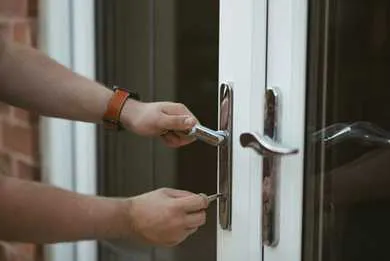Changing door locks is something that people require for a variety of reasons, but how do you change a door lock? Here at Door Superstore, we’ve created a guide to help you change your rim cylinder lock, Euro cylinder lock and mortice locks.
Table of contents
- Why change your door locks?
- Changing a rim cylinder lock
- Changing a mortice lock
- Changing a Euro cylinder lock
Why change your locks?
For many people, when moving into a new home it is important to change the door locks. This gives you added security and peace of mind – you can never be completely sure of who has copies of keys for the current locks, so could potentially access your new home.
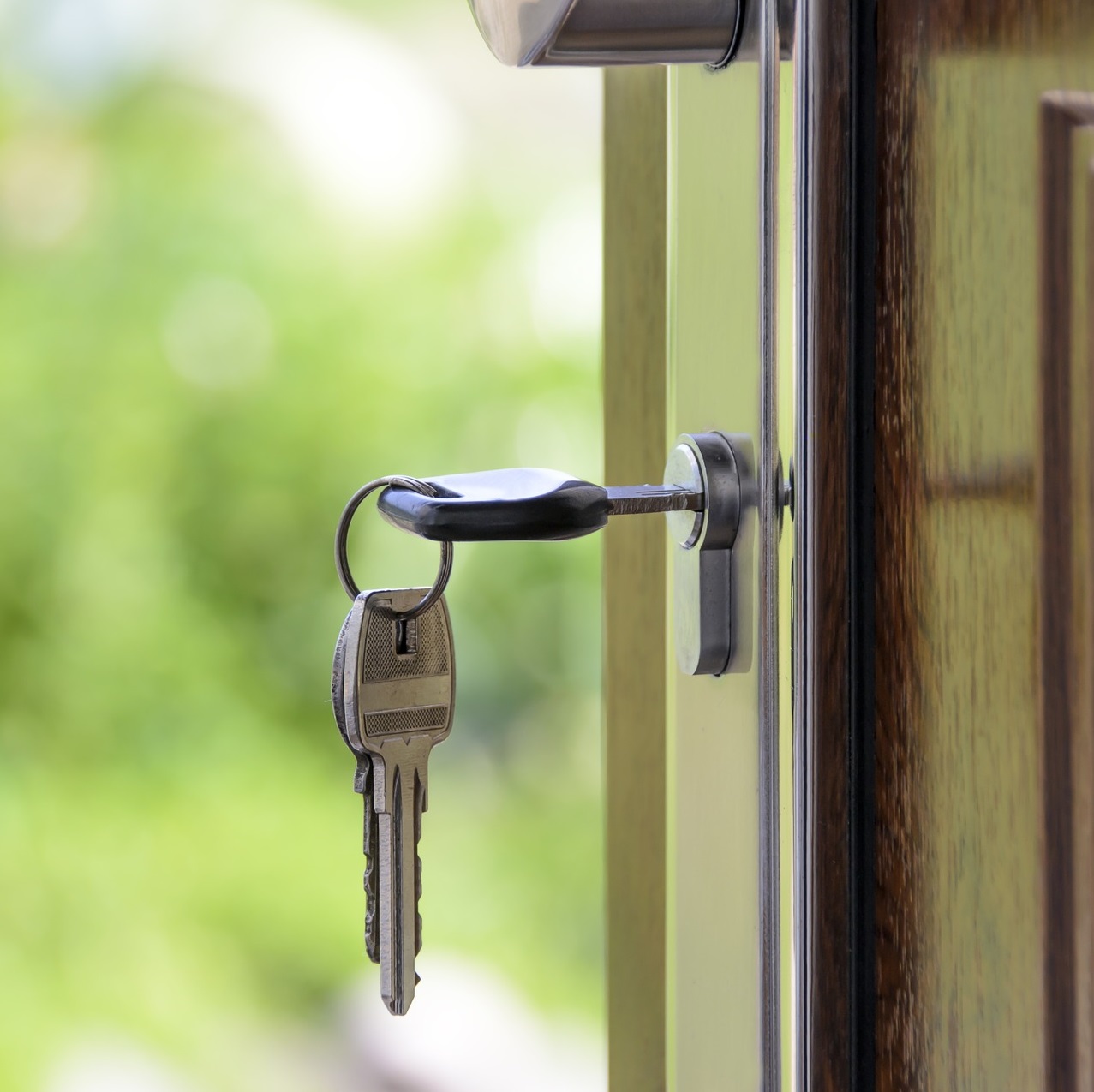
Additionally, if your locks are old, broken or worn out, it is best to get them replaced before they break. If the locks break, it could prevent you from being able to get into your property or allow others to access your personal belongings within your home or property.
Other circumstances in which it is recommended to change your locks include if your keys are stolen or lost, or a housemate moves out. Door locks are the main barrier to burglaries and intruders, so keeping them in optimum condition and limiting the number of people who have access to your property is crucial.
Changing a rim cylinder lock
Most often associated with wooden front doors, rim cylinder locks consist of a key cylinder on the outside and a night latch on the inside.
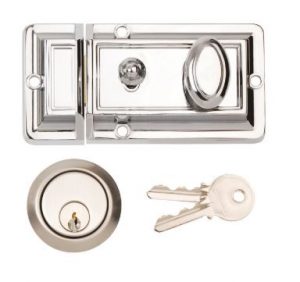
Replacing the rim cylinder
- The first step when replacing a rim cylinder lock is to remove the night latch. This generally involves simply removing the screws in the casing of the night latch, and taking the casing off.
- Now the cylinder should be visible. Remove the cylinder fixing screws, then pull the cylinder from the front side of the door.
- Compare the current and new cylinders – make sure they look the same and that the bar is the same length. If the new bar is too long, just cut it to size using a hacksaw.
- Some doors have a door pull around the rim cylinder lock. If so, make sure this is slid over the new cylinder before the cylinder is fitted.
- Place the cylinder in the hole from the front of the door, and secure the cylinder at the back using the fixing screws. If there is a backplate or mounting plate this should be fitted at this point.
- The next step is to reattach the night latch – place it over the cylinder fixings and onto the bar, then use the fixing screws to tighten it.
- Don’t forget to check that the latch and rim cylinder are functioning correctly by testing them before you close the door.
Changing a mortice lock
Mortice locks are rebated into the door, to give a clean flush finish to the door surface. There are two types of mortice lock – a sash lock and a deadlock. The sash lock has a latch and bolt and is commonly used on outbuildings, back doors and side entrances, whilst the mortice deadlock has a bolt and is commonly used on front doors.
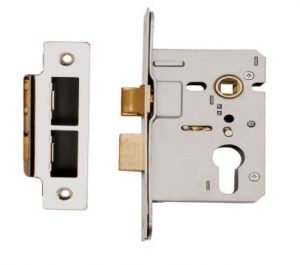
How to choose the correct mortice lock
Measure the backset of the current mortice lock, from the front edge of the door to the centre of the keyhole. From this you can determine the size of the lock you require – if the distance is 45mm, a 65mm mortice lock is required, or if the distance is 57mm, a 75mm mortice lock is required.
How to change the mortice lock
- Firstly, remove the screws from the lock faceplate (on the edge of the door). Generally, the faceplate is loose and not attached to the rest of the lock, so will come off easily. At this point, if you’re removing the sash lock you’ll also need to remove the handles and the spindle that connects them.
- The next step is to remove the lock. Ensure the bolt has been turned so that it is showing, and attach a pair of pliers to the bolt to pull the lock out.
- Compare the size and shape of the old and new locks. If they are the same, push the new lock into the mortice hole, position the faceplate and fix the lock using the screws provided. If the new lock is slightly longer, use a hammer and chisel to adjust the existing holes before fixing the lock.
- If you’re replacing a sash lock, fit the handles at this point.
- Remove the existing keep from the door frame by removing the screws. Then close the door against the frame with the lock bolt out, and mark the position of the bolt on the door frame.
- Put the new keep next to the markings, to see if it will fit into the existing hole. If needed, make the adjustments to the hole using a hammer and chisel to widen or lengthen the cutout, then fit the keep into the frame and fix using the screws provided.
- When fitted, it is important to check that the lock works correctly, both when the door is open and when it is closed.
Changing a Euro cylinder lock
Euro cylinders are one of the most common lock profiles on domestic properties in the UK. All Euro cylinder locks have the same profile, so there won’t be any issues with finding the correct shaped lock. Some Euro profile cylinder locks are operated with a key on each side, whereas others have a key on just one side, with a thumb turn on the other side.
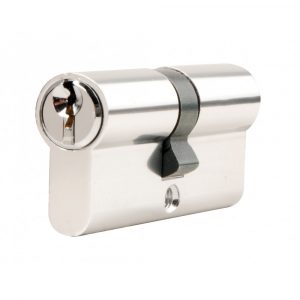
How to choose the replacement Euro cylinder lock
The length of the lock can vary depending on your door, so we’d recommend measuring your current lock to know the length required in the new lock. To measure this, open the door, and measure from the middle of the centre screw to the face of the door on each side.
How to change the Euro cylinder lock
Knowing how to change a Euro cylinder lock can make all the difference when it comes to security using this particular type of lock. Here are some key steps to changing Euro cylinder locks:
- Open the door and unscrew the lock fixing screw. Loosen the door handle screws slightly to reduce pressure on the lock, which can make it harder to remove.
- Turn the key slightly, left or right to line the cam tongue up with the main body of the lock. Pull the key gently as you turn, and when the cam tongue is lined up, the lock will begin to come out with the key.
- Now fit the new lock into the hole from which you removed the old lock. Insert with the cam tongue lined up, then move the key slightly left and right.
- Finally, screw the lock fixing screw into the door, and tighten the door handle screws again.
- Now just check the lock works properly by turning the key to check the bolt is connected.
If you have any questions about changing locks, buying locks or which lock is best for your door, feel free to call our team on 01752 422 501 and they will be more than happy to offer help and advice.

